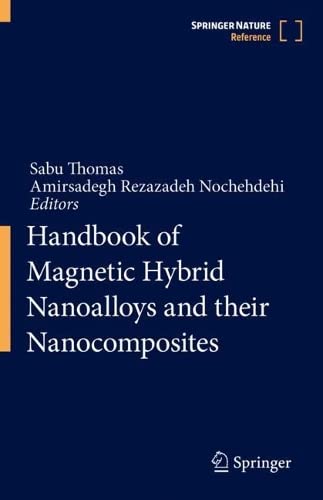

Most ebook files are in PDF format, so you can easily read them using various software such as Foxit Reader or directly on the Google Chrome browser.
Some ebook files are released by publishers in other formats such as .awz, .mobi, .epub, .fb2, etc. You may need to install specific software to read these formats on mobile/PC, such as Calibre.
Please read the tutorial at this link: https://ebookbell.com/faq
We offer FREE conversion to the popular formats you request; however, this may take some time. Therefore, right after payment, please email us, and we will try to provide the service as quickly as possible.
For some exceptional file formats or broken links (if any), please refrain from opening any disputes. Instead, email us first, and we will try to assist within a maximum of 6 hours.
EbookBell Team

4.8
74 reviewsThis comprehensive reference work satisfies the need for in-depth and multidisciplinary coverage of the current state of the art of magnetic hybrid nanoalloys (MHNAs) and their polymer and ceramic nanocomposites. MHNAs represent one of the most challenging research areas in modern science and technology. These materials are stiff and strong with remarkable electronic, mechanical, electrical, thermal and biocompatible properties, and a high potential for multifunctional applications ranging from industry to medicine. The peer-reviewed literature is already extensive, witnessing rapid progress in experimental and theoretical studies on fundamental properties as well as various advanced applications.
Part 1 covers theory, modelling, and synthesis (growth and alloying mechanisms) of MHNAs. Formation mechanisms of magneto-electric multiferroic materials, magnetic carbon nanotube (CNTs), and perovskite materials, which are a novel class of next-generation multifunctional nanomaterials, are discussed. The second part focuses on characterization techniques for electrical and dielectrical, rheological, biocompatibility, and other properties, as well as applications in the industrial, agricultural, environmental, and biomedical sectors. Finally, life cycle assessment is considered as essential to the development of nanomaterials and nanoproducts from MHNAs. Advanced undergraduate and graduate students, researchers, and other professionals in the fields of materials science and engineering, polymer science, surface science, bioengineering, and chemical engineering will find comprehensive and authoritative information for solving fundamental and applied problems in the characterization and use of these multifunctional nanomaterials.